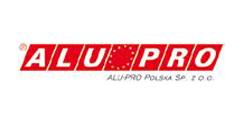Laminated safety glass with SentryGlas® ionoplast interlayer has played an important part in enabling the design of an all-glass staircase installed at the Onassis Cultural Center museum on Fifth Avenue, New York, USA.

The Onassis Cultural Center NY of the Onassis Foundation (USA) showcases a wide range of cultural and artistic programs that explore all phases of Hellenic civilization – ancient, Byzantine and modern. The museum was recently renovated in order to significantly upgrade and expand the galleries and to give the public space of the Olympic Tower Atrium an enhanced new look. Part of this renovation involved the installation of a new, all-glass staircase that connects ground floors with underground galleries.

The new, all-glass staircase at the recently renovated Onassis Cultural Center museum is a feat of engineering excellence.
The staircase is minimalistic in its design and features a cantilevered middle landing. The vertical stringers were made with four plies of glass bonded together by SentryGlas® ionoplast interlayers.
AGNORA, laminator on the project, is the North American leader in high precision, extra-large architectural glass fabrication. With CNC machining, tempering, laminating and insulating equipment, the company is able to process glass up to 130” (3,300 mm) widths and 300” (7,620 mm) lengths.
Louis Moreau, Senior Technologist at AGNORA, commented: “For this project, the structural requirements and loading issues were the primary factors that drove the use of SentryGlas®. Alternative PVB interlayers were considered, but these just didn’t make the cut due to the high stress areas involved in the centre staircase wall and the landing balustrades.
In addition, the bright yellow edge colour of some PVB interlayers also prohibited their use, whereas SentryGlas® provided a waterclear edge colour, which was critical in this application."
According to Mr. Moreau, AGNORA worked extensively on internal R&D, enhancing the requisite skills, tools and materials specifically for the project. “We felt as though we were creating a piece of art rather than a glass staircase. We’ve made a giant leap forwards in terms of developing new techniques and tools to trim and polish the vertical and horizontal edges of the glass.
It took us two years, but the resulting edgework of the laminated glass staircase is butter-smooth, without using post-laminate polishing on heat treated parts. In addition, the alignment of the holes and four-ply laminates are accurate to a world class level of glass fabrication."
The largest and most complex section of the staircase is the central wall. This measures 2,915 mm (115”) x 4,450 mm (175”) and uses four-ply 12 mm (1/2”) thick Starphire heat treated, low iron, extra-clear glass and two layers of 0.89 mm (35 mil) thick SentryGlas interlayer. The glass for the central wall alone weighs 1,130 kg (2,500 lbs).

Fabricating the centre wall section of the glass staircase in the clean room at Agnora (laminator).
Architect: Nick Leahy / Perkins Eastman.
Engineers: Michael Ludvik Design Engineers/Eckersley O’Callaghan Structural Engineering.
Glass Installer: Mistral Architectural Metal & Glass.
Laminator: AGNORA |
(...)
“All vertical load bearing parts of the staircase are made from either three or four-ply heat treated 12 mm (1/2”) thick glass and all horizontal components are annealed. The staircase treads, for example, are four-ply and the landing is all five-ply glass. The thickness and weight of the glass were utterly important,” adds Mr. Moreau.
AGNORA worked closely with two engineering partners on the project, Michael Ludvik Engineering, the design engineer, and Eckersley O’Callaghan, the review and installation engineer. As Mr. Moreau explains: “These two companies performed a number of critical structural engineering calculations on the glass staircase, including tests to verify if the resistance of the annealed treads met the requirements of ASTM C158 ‘Test Methods for Strength of Glass by Flexure’, which included four-point bending tests on the glass. The staircase also had to meet New York City building performance code regulations, which provided specifications on, for example, the height of the glass balustrades and the distance between handrails and treads.”
As Michael Ludvik states: “We worked hard to eliminate the stair tread connection hardware. Classically, you have two metal buttons at each end of the tread, but we replaced these with an all-glass gravity shelf. It’s a nextlevel dematerialisation of structure and has revealed a new layer of undistracted reflection and light transmission in the glass. The bond strength of SentryGlas® was essential in making this happen.”
The glass installer was Mistral Architectural Metal & Glass. The number of fasteners and fixings used in the staircase is minimal. Three steel-supporting rods to the centre wall maintain the verticality of the structure. All treads are secured in place using only silicone sealant (Dow Corning 121 two-part silicone). The wooden handrails are mounted to the glass using countersunk fittings embedded into the laminated glass.
In addition to the glass staircase, 1.52 mm (0.60”) thick laminate with SentryGlas® was specified for the balustrade at the top of the staircase.


Due to its high strength, stiffness and water-clear edge colour, SentryGlas® interlayer was the only viable option for the all-glass staircase.
The benefits of laminated glass with SentryGlas®
Worldwide, there is an increasing trend in the use of glass in both flooring and stairs in residential buildings, commercial/office buildings and retail outlets. This trend is being driven by the increased desire to provide more open plan, unique, stylish designs.
In staircases, stairwells and landings, the main function of SentryGlas® interlayer is to provide a high strength, stable, safe platform for people to walk or stand on. Resilient but firm edge support is also critical. In addition, secondary considerations are to retain the glass in place if it breaks.
Benefits of laminated glass with SentryGlas® in staircase applications:
- Laminated safety glass with SentryGlas® ionoplast interlayer remains intact even if broken.
- Easily meets the high load requirements of staircases and flooring, in terms of its strength and deflection properties. Very high stiffness compared to PVB.
- SentryGlas® is able to fulfil the high architectural safety standards at a reduced thickness compared to laminates with PVB. This means supporting structures used for the glazing can often be designed significantly lighter and therefore much more subtle in terms of their appearance.
Basic advantages of using an ionoplast interlayer such as SentryGlas® in lieu of PVB based interlayers include higher design loading capacity, waterclear edge colour, and better edge stability/durability. Photo: © Agnora
|
Trosifol is the global leader in PVB and ionoplast interlayers for laminated safety glass in the architectural segment. With the broadest product portfolio Trosifol offers outstanding solutions:
- Structural: Trosifol® Extra Stiff (ES) PVB and SentryGlas® ionoplast interlayer
- Acoustic: Trosifol® SC Monolayer and Multilayer for sound insulation
- UV Control: from full UV protection to natural UV transmission
- UltraClear: Lowest Yellowness Index in industry
- Decorative & Design: black & white, colored & printed interlayers
|
www.trosifol.com
Całość artykułu w wydaniu drukowanym i elektronicznym
Inne artykuły o podobnej tematyce patrz Serwisy Tematyczne
Więcej informacji: Świat Szkła 09/2017




































